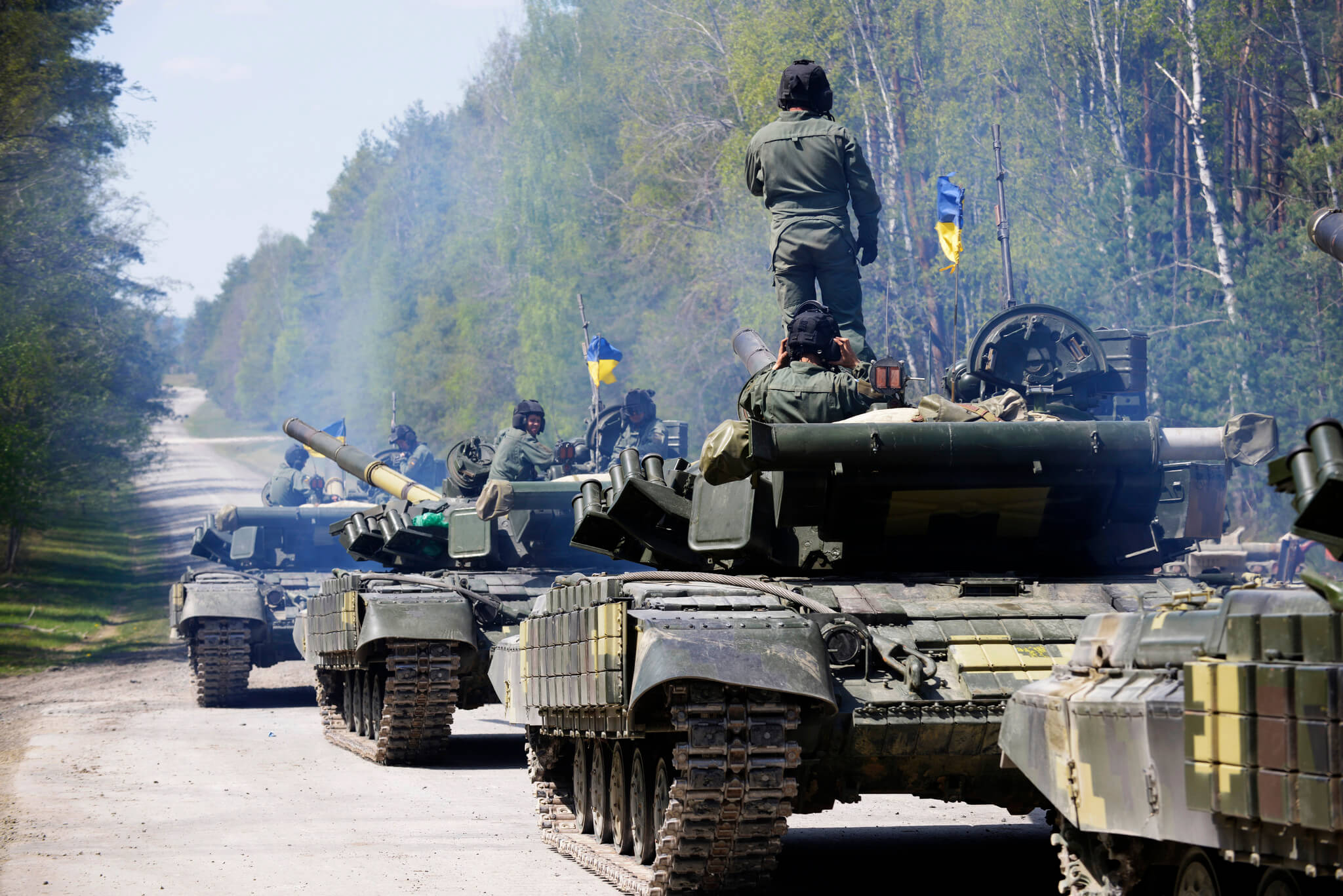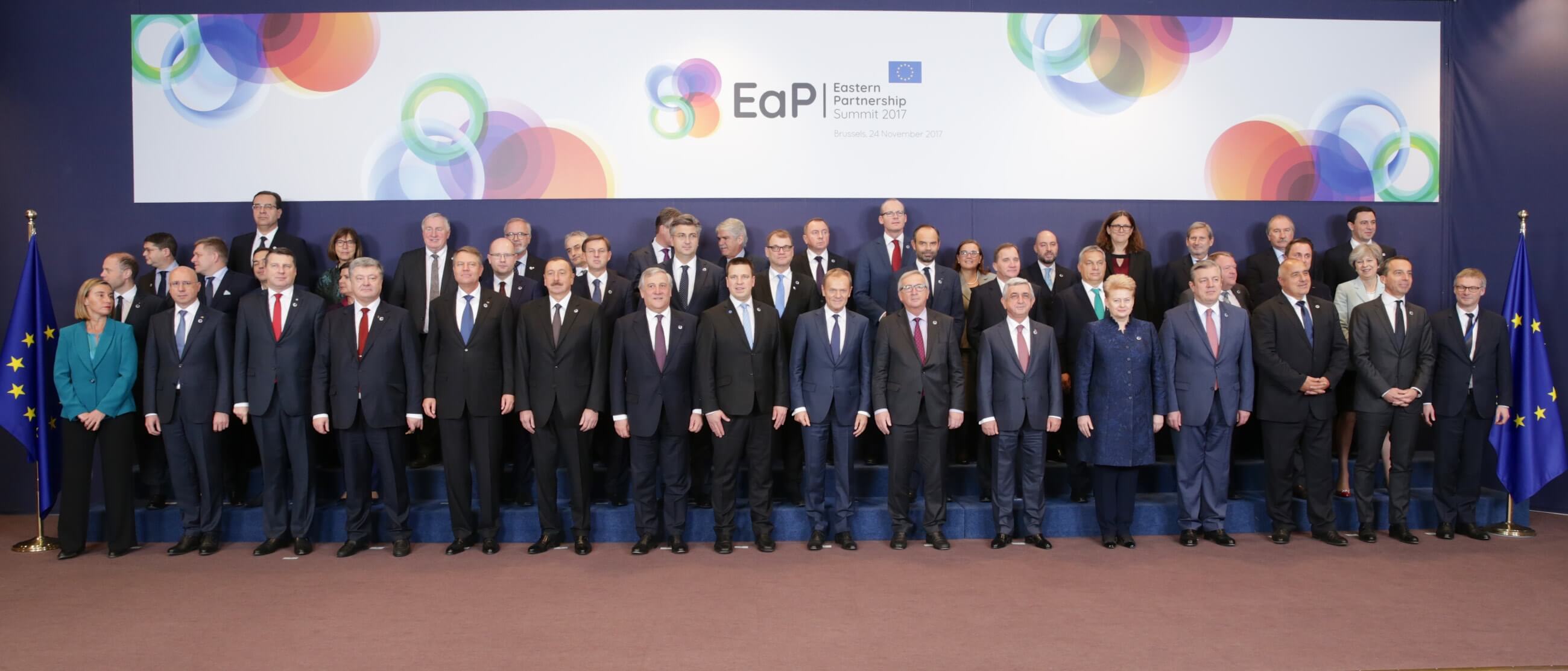
EU's Eastern dilemma: prioritising interests over values?
The recent Eastern Partnership Summit showed an ambitious transformative agenda for the future, but also reflected a more realist and pragmatic EU approach towards the Eastern Partners. This approach is not without risks, as the EU can hardly overcome difficulties in enforcing reforms in strengthening rule of law and combating corruption. Furthermore, it remains difficult to see, how stability can be achieved without at least tacit cooperation with Russia or its competing integration project, the Eurasian Economic Union.
The Eastern Partnership Summit in Brussels on 24 November 2017 was the first such meeting after the review of the European Neighbourhood Policy (ENP), which resulted in a shift to more realistic policies, prioritising stability in the region and recognising different levels of ambition of partner countries in their relations with the European Union.1 This was also reflected in the EU’s Global Strategy of 2016,2 which coined the term ‘principled pragmatism’ as a basic principle for the EU’s external relations. Whether this new approach, developed in reaction to the Ukraine crisis in the East and the migration crisis in the South, will ultimately lead to the obsolescence of the ENP – as suggested in a recent CEPS-study3 – or whether the Eastern Partnership (EaP) could be revitalised, remains a so far unresolved question.
In this context, this article first looks into the effectiveness of the EU’s projection of its norms and values towards the East. Could the Union still be seen as a Regional Normative Hegemon and do Eastern partners still voluntarily accept ever increasing parts of the acquis communautaire, transforming their political and economic systems and bringing them closer in line with the European Union? Furthermore, how far does differentiation lead to fragmentation of the EaP and increased bilateralism in the relations between the EU and Eastern partners, based more on shared geopolitical interests than on shared values? Finally, what do the results of the recent EaP Summit imply for the future relationship between the EU and the most important ‘neighbour of the neighbours’ – Russia? How far can the EU stabilise its Eastern Neighbourhood without closer cooperation with Moscow?
The end of the EU as a Regional Normative Hegemon?4
In the Eastern Partnership the EU has attempted to enhance stability, security and prosperity in the region by projecting its own norms and values, demanding the acceptance of an increasing part of the EU’s acquis communautaire as a prerequisite for closer political association and integration into the EU’s internal market. In return for implementing a deep reform agenda, including strengthening the rule of law and taking serious anti-corruption measures, the EU offers conditional assistance, according to the principle of ‘more for more or less for less’.
However, continued uncertainty about a long-term EU membership perspective has diminished the enthusiasm in partner countries for deep and costly reforms, as demanded when adopting EU norms and standards. The EU is presently suffering from ‘enlargement fatigue’ and a sizable number of EU member states – including, after the Ukraine referendum, the Netherlands – firmly oppose any opening to eventual EU membership for Eastern Partnership countries.

Even for Ukraine, Georgia and Moldova, the partner countries with the most advanced European aspirations and reform agenda’s, reforms will only lead to real economic and social advantages for the population at large in the longer term. Furthermore, in the present situation governments are often reluctant to implement deeper reforms which would threaten corrupt structures or in some cases, like in Moldova, partial state capture by local oligarchs.
The EU will address such issues in dialogue with partner countries on the basis of the respective Association Agenda’s, but conditionality remains weak. In practice, the EU would be hesitant to go beyond any temporary freeze of sectoral assistance, like in Moldova. For the EU to resort to the ‘nuclear option’ of suspending the Association Agreement entirely is hardly a realistic perspective, even when no substantial progress in crucial anti-corruption efforts is being made. Although the Summit declaration focuses on improving the life of individual citizens in Eastern Partnership-countries, it mainly remains up to them to hold their governments accountable (in elections or street demonstrations) in case of non-compliance with fundamental reforms as demanded by the Association agenda’s. The EU only promises to stimulate ‘resilience’ in civil society to deal with such internal challenges.
It remains difficult to envisage how the EU could effectively project its norms and values in the Eastern Neighbourhood and keep local support for further European association and integration
In the absence of a membership perspective, the only tangible short-term advantage was visa liberalisation, which has already been acquired by all associated partners. Other ‘low-hanging fruit’ hardly seems to be available. Therefore, the European Parliament has formulated an ‘Eastern Partnership Plus’-approach for “associated countries that have made substantial progress on EU-related reforms to offer them the possibility of joining the customs union, energy union, digital union or even the Schengen area and abolishing mobile roaming tariffs.”5
However, at the recent EaP-Summit such ideas have hardly been reflected in the Summit declaration, or the accompanying annex with “20 deliverables for 2020”.6 It would also have been difficult to offer such prospects, in light of stagnating reforms and weak (negative) conditionality. Even visa liberalisation could come under threat, when the visa suspension mechanism is linked to anti-corruption efforts.
It thus remains difficult to envisage how the EU could effectively project its norms and values in the Eastern Neighbourhood and keep local support, both with governments and the local populations, for further European association and integration. And the fact that the EU’s fundamental norms and values, like independence of the judiciary and free media, are also under threat in some EU member states (Hungary, Poland) does not really help either. In the Summit declaration the answer to such challenges is embodied in the EU’s commitment to strengthen ‘resilience’: enabling countries to respond more effectively to internal and external challenges. However, how the EU intends to put such policies into effect without resorting to tough and smart conditionality, remains unclear.
Geopolitical fragmentation of the Eastern Partnership
Differentiation between partners according to the level of ambition in their relations with the EU has led to the formation of a group of front runners with Association Agreements/DCFTA’s7
(Ukraine, Georgia and Moldova), followed by Armenia (with a new Comprehensive and Enhanced Partnership Agreement, CEPA) and Azerbaijan and Belarus with agreements on ‘Partnership priorities’ under negotiation. The association partners are most advanced in their approximation and harmonisation with EU norms and principles, Armenia is somewhere in-between and Azerbaijan and Belarus are mostly considered as laggards in their process of convergence with the EU, being either unable or unwilling to adopt EU norms and values in a substantive manner.
Even within the group of most advanced partner countries the pace of Europeanisation is uneven. Some years ago Moldova was considered the success story. At present Georgia seems to be the front runner, whereas the others are more seriously threatened by corruption and state capture. Furthermore, under the present conditions governments could easily resort to geopolitical arguments about the need to counter Russian influence within their societies, in order to justify their reluctance to implement reforms, threatening their hold on political and economic power. These arguments clearly resonate with the EU’s policy to prioritise stability and security over further democratisation, anti-corruption efforts and strengthening the rule of law.
Russia can still avail itself of considerable ‘residual power’ in the ‘contested neighbourhood’ and has displayed its willingness to use it whenever its self-proclaimed interests are threatened
Fragmentation of the Eastern Partnership is further enhanced by the geopolitical tug of war between the EU and Russia in a ‘shared neighbourhood’, which has recently developed more into a ‘contested neighbourhood’. In this context, Russia not only uses its historical political, economic and cultural connections in former Soviet states, but is actively promoting closer relations with the Eurasian Economic Union (EAEU) as an alternative to further association and integration with the EU. Such policies affect not only the EU’s relations with EAEU-member states Armenia and Belarus, but could easily become an important factor in the relations with Moldova as well, where the president actively strives for closer relations with the EAEU and the government sticks to its nominally pro-European agenda.

In this context, the Summit declaration refers once again to the need to strengthen ‘resilience’, enabling countries to better withstand external pressure, including implicitly from neighbouring states like Russia. However, it remains doubtful whether such efforts could really be effective when dealing with the combined challenges to internal reforms and stability and security in the broader region. In the end, the EU’s policies could hardly be successful without at least some tacit cooperation with Russia, which can still avail itself of considerable ‘residual power’ in the ‘contested neighbourhood’ and has displayed its willingness to use it, whenever Moscow’s self-proclaimed interests are threatened.
The Eastern Partnership and continued confrontation with Russia
Discussions on ENP-renewal paid some attention to the role of the ‘neighbours of the neighbours’: how other regional players could be involved in multilateral EaP-formats. However, no solution has been found how to deal with the biggest ‘elephant in the room’, Russia. Also at the recent EaP-Summit Russia was only addressed in an indirect way. Although the Summit declaration leaves the door open for “cooperation on a case-by-case basis with third parties” and underlines once more that the EaP is “not directed against anyone”, explicit cooperation with Russia in the framework of the Eastern Partnership seems unrealistic, as long as the Ukraine conflict remains unresolved. This is only a logical assumption, as precisely the EU’s region-building efforts and the potential transformative effects of its norms and values in the post-Soviet space have led to the present crisis, as clearly indicated by Laure Delcour in a recent article.8
However, a more indirect way of working constructively with ‘neighbours of the neighbours’ has largely been overlooked. In principle, the European Union and the Eurasian Economic Union could work towards closer approximation of technical norms and standards and a more flexible implementation of the DCFTA’s could encourage trade opportunities for the EU’s association partners with third countries within the CIS, as indicated in an earlier Clingendael report.9
In as far as this is within the competence of the Eurasian Economic Commission, trilateral consultations could be in the shared interest of the EU, the EAEU and Eastern partners. The recent CEPA-agreement between the EU and Armenia could serve as a model for EAEU member state Belarus as well, although it was negotiated without involvement of the Eurasian Economic Commission, which could be more difficult to avoid in the Belarusian case. Furthermore, the EU could face the need to look more closely into trilateral options, involving the EAEU, if a more pro-Russian Moldovan government would take office after the upcoming parliamentary elections, and would request such an approach.
Conclusions
On the one hand, the recent Eastern Partnership Summit still showed an ambitious transformative agenda for the future, but also reflected a more realist and pragmatic approach towards the Eastern Partners. ‘Principled pragmatism’ implies in practice a prioritisation of stability over a clear projection of the EU’s norms and values. This values-based policy was already undermined by weak conditionality and geopolitical arguments of some anti-reform governments. Furthermore, differentiation between partner countries according to their level of ambition in relations with the EU leads to increased fragmentation of the Eastern Partnership as a values-based ‘region-building project’.
Addressing these challenges, the Summit has proclaimed the EU’s intention to support ‘resilience’ of both governments and civil societies in partner countries. However, whether this will really enable pro-European forces in these countries to effectively support and implement necessary reforms under their own local conditions remains to be seen.
Finally, as long as the present geopolitical tug of war with Russia continues and Moscow can still use its considerable influence in the EU’s partner countries to frustrate EU-policies, the EU will not be able to accomplish its aim of stabilising the Eastern neighbours, unless at least some implicit cooperation with Russia’s alternative integration project, the EAEU, could be established. The recent Summit did not provide such a way out.
UPDATE: Check also Tony van der Togt’s comments in this podcast discussion dedicated to assessing the developments in the Eastern Partnership area in the fields of Security, Foreign Policy, Economy, Democracy and Education. Just like the article, the European Neighbourhood Council (ENC)-podcast follows the 5th EaP Summit of November 2017.
- 1European Commission, Joint Communication of the European Commission and the High Representative of the Union for Foreign Affairs and Security Policy. Review of the European Neighbourhood Policy. JOIN (2015) 50 final, Brussels, 18 November 2015.
- 2European Union Global Strategy, ‘Shared Vision, Common Action: A Stronger Europe A Global Strategy for the European Union’s Foreign And Security Policy’, June 2016.
- 3Blockmans, S. (2017), ‘The Obsolescence of the European Neighbourhood Policy’, CEPS, Brussels
- 4Haukkala, H. (2008), ‘The European Union as a Regional Normative Hegemon: The Case of European Neighbourhood Policy’, Europe-Asia Studies, 60:9, pp. 1601-1622, DOI: 10.1080/09668130802362342
- 5European Parliament Newsroom, MEPs want to reward reforms made by Eastern partners, 15-11-2017.
- 6European Council, Eastern Partnership Summit - Joint declaration, press release 24-11-2017.
- 7DCFTA = Deep and Comprehensive Free Trade Area.
- 8Delcour, L. (2018), ‘Dealing with the elephant in the room: the EU, its “Eastern neighbourhood” and Russia’, Contemporary Politics, 24:1, pp. 14-29, DOI: 10.1080/13569775.2017.1408169
- 9Montesano, F., Van der Togt, T. and Kozak, I. (2015), ‘From Competition to Compatibility. Striking a Eurasian balance in EU-Russia relations’, Clingendael Report, The Hague.






0 Comments
Add new comment